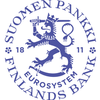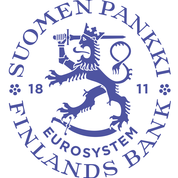Monetary policy tightening to bring inflation down to target – Managing energy crisis takes key role

In autumn 2021 the euro area economy was picking up as the COVID-19 pandemic began to ease. Russia’s brutal attack on Ukraine in February 2022 necessitated a reordering of priorities in international politics. The Ukraine war and the energy crisis arising from it have darkened the economic outlook. “The energy crisis and swings in the economy are now affecting everyday life for all of us. Gas supplies have clearly been weaponised by Russia in an energy war. So the European Union must bring order to its ranks once again and resolve this energy crisis,” says Governor of the Bank of Finland Olli Rehn.
The adverse growth impact of the energy crisis is largely still to come.The euro area economy will be unable to rely on world trade to bolster it. Economic growth has slowed in both the United States and China, and this adversely affects the export outlook for the euro area. The prospect of a recession in the euro area has grown more likely.
Inflationary pressures gathered momentum over the summer as the energy crisis worsened in Europe. Natural gas and electricity in particular have risen sharply in price and there is an energy shortage too. Inflation in the euro area was 9.1% and in Finland 7.9%. in August. Higher energy and food prices have been major factors driving up inflation, but the prices of many other products and services have also risen this year.
While the ability of monetary policy to specifically influence energy prices is very limited, monetary policy measures are being deployed to respond to the surge in the general level of prices. “The key ECB interest rates were raised by half a percentage point in July and by a further 0.75 percentage points in September. The aim was to bring forward the transition from very low rates towards a level that will ensure inflation is brought down to our 2% target over the medium term,” explains Governor Rehn.
The surge in inflation has so far been reflected only moderately in wage trends within the euro area. To make sure inflation is brought down in the years ahead, it is essential to avoid an adverse wage-price spiral and to keep inflation expectations stable. “The task of monetary policy is to ensure that inflation expectations remain anchored and accord with the inflation target over the medium term,” says Rehn.
The energy crisis sets new challenges for public finances in the euro area. The long-term debt sustainability of more than one third of the countries in the euro area is under serious threat. “The efforts of EU countries to identify ways to limit household energy bills are understandable, but indiscriminately increasing expenditure would not be and would not help in the fight against inflation. It would instead be right to balance out the effects of the rise in prices through tailored, temporary measures targeted at the most vulnerable,” says Rehn.
Keywords
Images
Links
About Suomen Pankki
The Bank of Finland is the national monetary authority and central bank of Finland. At the same time, it is also a part of the Eurosystem, which is responsible for monetary policy and other central bank tasks in the euro area and administers use of the world’s second largest currency – the euro.
Subscribe to releases from Suomen Pankki
Subscribe to all the latest releases from Suomen Pankki by registering your e-mail address below. You can unsubscribe at any time.
Latest releases from Suomen Pankki
Marja Nykänen utnämnd till medordförande i Finansiella stabilitetsrådets regionala konsultativa grupp för Europa1.7.2025 17:00:00 EEST | Pressmeddelande
Utnämningen stärker Finlands aktiva roll som främjare av global finansiell stabilitet.
Marja Nykänen nimitetty kansainvälisen rahoitusvakausneuvoston Euroopan alueellisen ryhmän toiseksi puheenjohtajaksi1.7.2025 17:00:00 EEST | Tiedote
Nimitys vahvistaa Suomen aktiivista roolia kansainvälisen rahoitusvakauden edistäjänä.
Marja Nykänen appointed as Co-Chair of Financial Stability Board’s Regional Consultative Group for Europe1.7.2025 17:00:00 EEST | Press release
This appointment reinforces Finland’s active role in fostering international financial stability.
Hushållen har mycket konsumtionskrediter – tillväxttakten har mattats av1.7.2025 10:00:00 EEST | Pressmeddelande
I maj 2025 uppgick det utestående beloppet av konsumtionskrediter som banker med verksamhet i Finland beviljat hushåll till 17,6 miljarder euro och utlåningen minskade med −0,7 % från året innan. Minskningen i det utestående beloppet av konsumtionskrediter är en följd av att utnyttjandet av konto- och kortkrediter och utbetalningarna av konsumtionskrediter utan säkerhet har minskat. Konsumtionskrediter beviljade av banker står för 63 % av hushållens totala utestående konsumtionskrediter. I maj 2025 minskade hushållens utestående kortkrediter[1] (3,6 miljarder euro) med −1,0[2] jämfört med ett år tidigare, då de utestående kortkrediterna vid motsvarande tidpunkt året innan ökade med nästan 6 %. Vid utgången av maj var 19 % av kortkrediterna räntefri betaltidskredit och 81 % äkta kortkrediter, dvs. kortkredit med ränta. I januari–maj 2025 utbetalades från bankerna 9 % mindre sedvanliga konsumtionskrediter utan säkerhet[3] jämfört med motsvarande tidpunkt ett år tidigare. Också det utestå
Kotitalouksilla runsaasti kulutusluottoja –kasvuvauhti hidastunut1.7.2025 10:00:00 EEST | Tiedote
Toukokuussa 2025 Suomessa toimivien pankkien kotitalouksille myöntämien kulutusluottojen kanta oli 17,6 mrd. euroa ja se supistui vuodentakaisesta −0,7 %. Kulutusluottokannan supistumiseen vaikuttavat tili- ja korttiluottojen vähentynyt käyttö ja vähäisemmät vakuudettomien kulutusluottojen nostomäärät. Pankkien myöntämät kulutusluotot kattavat 63 % kotitalouksien kokonaiskulutusluottokannasta. Toukokuussa 2025 kotitalouksien korttiluottokanta[1] (3,6 mrd. euroa) supistui −1,0 %[2] vuodentakaiseen verrattuna, kun vuosi sitten vastaavana aikana korttiluottokanta kasvoi lähes 6 prosentin vauhdilla. Toukokuun lopussa korttiluotoista 19 % oli korotonta maksuaikaluottoa ja 81 % pidennettyjä korttiluottoja eli korollista korttiluottoa. Tavanomaisia vakuudettomia kulutusluottoja[3] nostettiin pankeista tammi-toukokuun 2025 aikana 9 % vähemmän kuin vuosi sitten vastaavana aikana. Myös vakuudettomien kulutusluottojen kanta supistui toukokuussa. Suomessa toimivien pankkien myöntämistä kulutusluot
In our pressroom you can read all our latest releases, find our press contacts, images, documents and other relevant information about us.
Visit our pressroom

